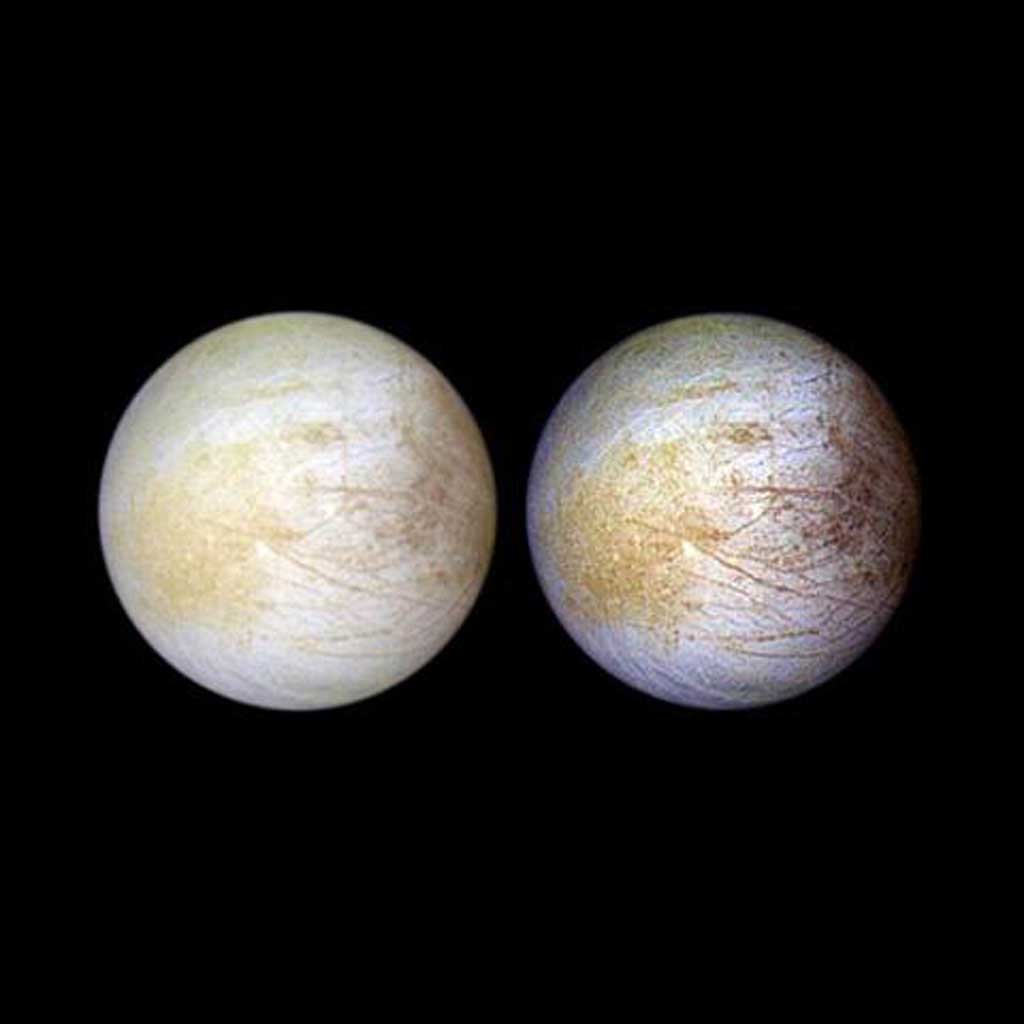To the best of our knowledge, Europa has an ice shell of a few to as many as 12 miles (20 kilometers) in thickness, underneath which lies a global 60-mile-deep (100km) liquid water ocean.
Jupiter and Ganymede’s tidal tug-and-pull on Europa distorts it from a perfect sphere and may even cause a rise in the ice shell as high as 100 feet (30 meters) as the moon circles in its 3.55-day orbit. Importantly, Europa’s day is the same as its orbital period; in other words, Europa always shows the same face to Jupiter.
Now, if the moon’s orbit were a perfect circle, then it would be easy for one europan day (one spin on its axis) to match the timing of its orbit around Jupiter. But Europa’s orbit is not perfectly circular — it’s forced into a slightly elliptical shape by the tug of Ganymede. What this means, as Johannes Kepler taught us, is that when Europa is closest to Jupiter (perijove), it’s traveling faster than when it’s farthest away from Jupiter (apojove). Well, Europa’s rotation cannot easily speed up and slow down to match its changing orbital speed. As a result, when Europa is nearing perijove, its tidal bulge lags behind — the rotation hasn’t kept pace with the orbital velocity. The gravitational tug from Jupiter on this bulge causes it to move.
This motion is called nonsynchronous rotation, and it can occur on any world. But with Europa it could cause the ice shell to float freely on the ocean, making it easier to move. Members of NASA’s Galileo spacecraft imaging team compared their images with those from the Voyager mission (a 17-year difference) and found that if the ice shell is rotating nonsynchronously, it is doing so at a rate of more than 12,000 years per full rotation.
Finally, there is another global-scale ice motion called “polar wander.” In this case, the entire ice shell is predicted to move as a result of thicker ice regions growing at the poles but then becoming unstable and consequently moving out and down toward the equator.
There are lots of interesting predictions about what’s happening on, and within, Europa. Now we just need to get back out there to explore this fascinating world!
Jet Propulsion Laboratory
Pasadena, California










